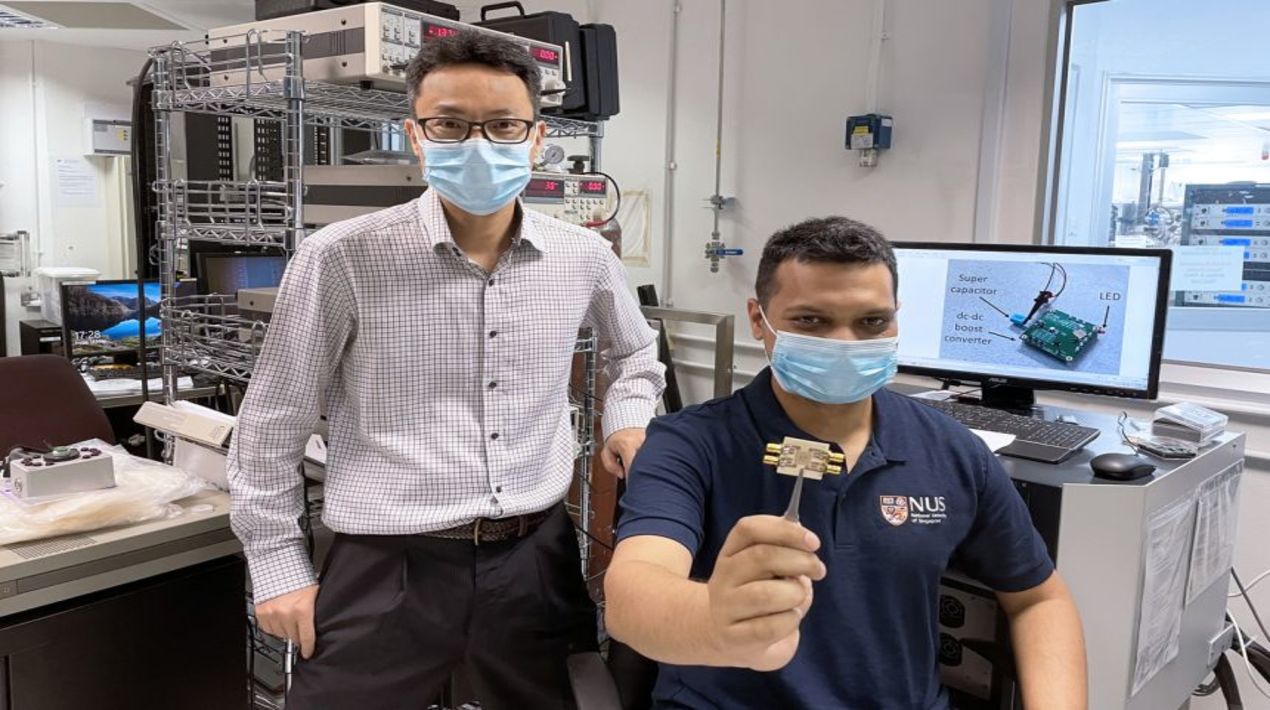
A team of researchers from Singapore and Japan has found a new way to use devices to convert Wi-Fi signals into electricity to power small LED lights. The research, which was published last week in the prestigious Nature Communications scientific journal, could eventually help wirelessly power wearable medical and consumer electronic devices. This is possible if they are within range of Wi-Fi signals that can be up to 100m.
Reports say that charging smart devices wirelessly in the future could be as simple as being near a Wi-Fi router, after this recent technological breakthrough. As for medical implants, the technology could do away with undergoing surgery each time an implant’s battery needs to be replaced because it has run out. The Wi-Fi energy harvesting technology could also help power sensors, such as those on buildings for environmental monitoring and other smart city applications.
One of the researchers involved from the National University of Singapore’s (NUS) Department of Electrical and Computer Engineering, said the team has received many queries on the research. A number have come from the medical field, where there is interest in powering neural device implants. The world is surrounded by Wi-Fi signals but when people are not using them to access the Internet, they are inactive. And this is a huge waste, he explained.
The latest research is a step towards turning readily available Wi-Fi signals into a green source of energy, hence reducing the need for batteries to power electronics that people use regularly, he added.
The Wi-Fi harvesting technology involves small devices called spin-torque oscillators used in wireless communication systems. Using commercial manufacturing processes, it may be possible to fit one billion to 10 billion of these small oscillators into a 1cm square chip, said the researchers. By tapping how sub-atomic particles called electrons spin, the oscillators can convert electricity into a Wi-Fi signal. The devices can also do the reverse to convert a Wi-Fi signal into electricity, which is what the researchers explored.
The researchers said that while semiconductors can convert radio waves into power, Wi-Fi signals – which occupy the 2.4GHz radio wave band – are just too weak and low-powered for semiconductors to harvest energy. But the researchers found that spin-torque oscillators are better at this. They developed an array containing eight spin-torque oscillators arranged optimally. When exposed to Wi-Fi signals, the array was able to charge another device for five seconds to power a 1.6-volt LED for one minute.
The researchers are looking at improving the energy harvesting ability of the technology and plan to test it for wirelessly charging electronic devices and sensors. The research team said that based on the small size of their energy harvester and the small amount of Wi-Fi energy used, the technology does not affect Wi-Fi communications. As the harvester cannot decode encrypted Wi-Fi signals, there should be no worries about snooping on the signals too, they added.
The team of eight researchers from NUS and Japan’s Tohoku University took almost three years and spent USD 1 million on the research.
The Chairman of The Institution of Engineers, Singapore’s digital technology technical committee, said that while harvesting power from radio frequency signals, including Wi-Fi, is not a new concept, the Singapore-Japan research is novel. This is because the approach used is different, he added. The amount of energy harvested using this method is usually small, but it would be very useful to power Internet of Things devices, in particular small sensors that require very little energy to function.
















